Sleep is an essential part of our daily lives. However, only the best mattress can ensure a good sleep. India has diversified mattresses, just like its culture. Knowing about these mattresses in detail is key to finding the mattress that suits you! Don’t you wish to come home to a mattress that gives you the comfort, the rest, and the peacefulness that you deserve after a long day?
In this article, we will learn about the different types of mattresses available in India that you can choose for yourself!
10 Types of Mattress in India
1. Latex Foam Mattresses
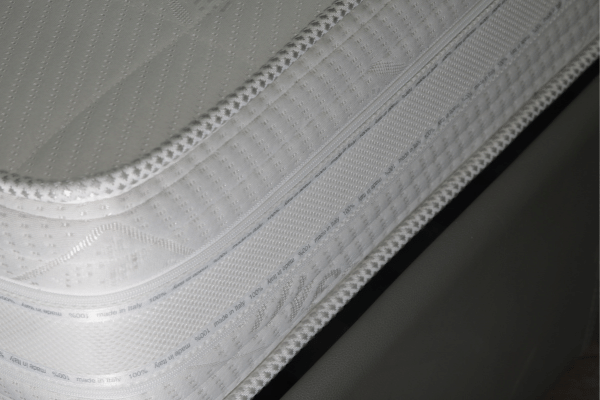
Latex Foam Mattresses are currently one of the most trending mattresses. They are eco-friendly and are made of latex obtained from the sap of rubber trees. However, some manufacturers may mix synthetic and natural latex. Hence, always ensure that you buy the mattress from a genuine seller.
Pros of Latex Foam Mattresses:
Latex Foam Mattresses are popular because of their numerous benefits.
- A Latex foam mattress is bouncy and has a faster response time.
- Latex foam mattresses are hypoallergenic and need less maintenance.
- The general cushioning effect of Latex Foam Mattresses provides a pain-relieving effect.
- Latex Foam mattresses are also popular among Orthopaedics because of the level of comfort they provide.
- Latex Foam Mattresses do not induce or regulate heat and provide a colder feel.
- These mattresses are breathable and springy, helping them restore their original shape.
- A good quality Latex Foam Mattress may last for 12 to 20 years.
Cons of Latex Foam Mattresses:
Latex foam mattresses are also associated with a few cons despite their numerous benefits.
- Latex foam mattresses are expensive.
- Latex Foam Mattresses are harder to lift and move around.
2. Memory Foam Mattresses

A memory foam mattress is a new addition to the world of mattresses. NASA was the first to develop memory foam mattresses as their airplane seats. Earlier, the cost of memory foam mattresses was high due to their materials. However, with the recent advances in production, the prices of memory foam mattresses have now dropped.
According to a study published in Sleep Science Journal, people sleeping on memory foam mattresses of medium firmness had experienced reduced pain and fell asleep umm quicker.
Pros of Memory Foam Mattresses:
- Due to smart gels in memory foams, they are highly comfortable.
- Memory Foam Mattresses adjust according to your body shape and sleeping positions.
- Memory Foam Mattresses are excellent motion absorbers. Hence, even if your partner turns and tosses in the bed, you won’t be disturbed.
Cons of Memory Foam Mattresses:
- Memory Foam Mattresses absorb heat. Hence, they may not be the best choice for summers.
- Memory Foam Mattresses may release a foul odor due to their chemicals, often termed ‘off-gassing’.
Can memory foam hurt your back?
Memory Foam not suited as per your comfort levels may cause back pains. When your back is not in a straight alignment, it causes pain. With memory foam mattresses, your back sinks while sleeping, and hence you may experience back pain.
3. Orthopedic Mattresses
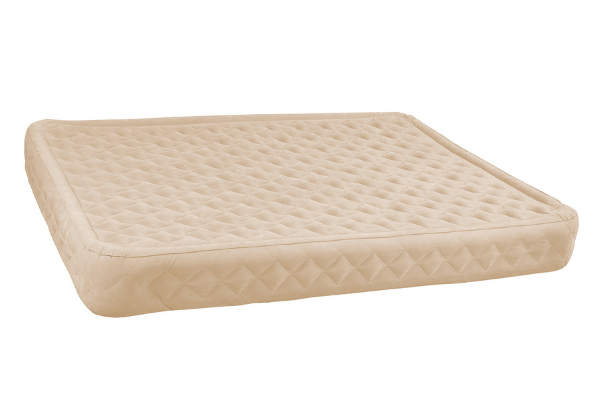
As the name suggests, orthopedic mattresses are made for orthopedic patients to relieve their pain. Doctors have recommended them to relieve pain and restlessness. An orthopedic mattress comprises various materials, including latex foam, memory foam, and innerspring.
Pros of Orthopedic Mattresses:
- Orthopedic mattresses have a firm surface that helps relieve pain from various body parts. Nonetheless, these mattresses are responsible for spine alignment, making them a perfect choice for relieving back pains.
- Orthopedic Mattresses are known for the comfort they provide.
- Orthopedic mattresses improve your posture.
- Orthopedic mattresses are long-lasting and durable.
- Orthopedic Mattresses do not absorb heat from your body. Hence, they always provide a cooler effect.
- Orthopedic mattresses distribute your body weight evenly. Thus, no part of your body is a pressure point at any given time, helping relieve pain.
- Orthopedic mattresses provide an optimum pushback effect, aiding in a perfect sleep position.
Cons of Orthopedic Mattresses:
- Orthopedic Mattresses are expensive.
- Orthopedic Mattresses are not suitable for all kinds of pain. Hence, consult your doctor before buying an orthopedic mattress.
- Orthopedic mattresses are heavy and difficult to carry around.
4. Back Support Mattresses
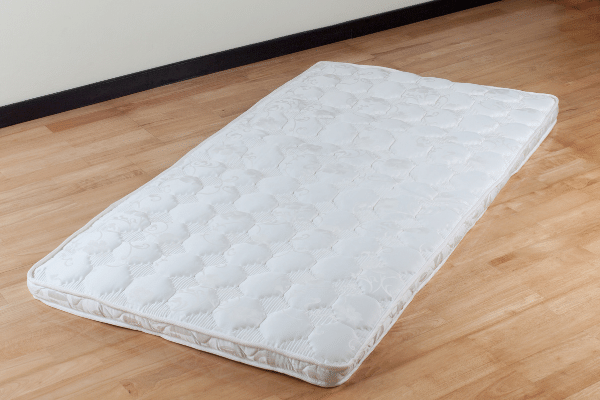
Back Support Mattresses align the spine and relieve pressure and pain from different body parts, including the shoulders, spine, and pelvic area. They are highly recommended for old age people, people suffering from spine problems, or other chronic issues. Back support mattresses are made of a variety of different materials.
Pros of Back Support Mattresses:
- Back Support Mattresses are an excellent choice for everyone, including those with or without any health conditions.
- Back Support Mattresses are suitable for spinal health and core muscles.
- Back Support Mattresses are made of various materials providing adequate support to the back.
Cons of Back Support Mattresses:
- Back support mattresses are not ideal for those who sleep on their stomach, as they might put more strain on it leading to deterioration.
5. Pocket Spring Mattresses
Pocket Spring Mattresses are one of the most sold mattresses in India. They are made with pocket springs enclosed in a fabric pocket. Since all springs are independent and in individual fabric pockets, they react to the pressure applied to them only. Hence, with Pocket Spring Mattresses, personalized support and response are guaranteed.
Pros of Pocket Spring Mattresses:
- Pocket Spring mattresses are highly comfortable because of the springs in them.
- Pocket Spring Mattresses allow personalized and better support to the body.
- Pocket Spring Mattresses are suitable for orthopedic patients or patients suffering from different kinds of pain.
- Pocket Spring Mattresses are highly durable and last more than other innerspring mattresses.
- Pocket Spring Mattresses are breathable, do not accumulate body heat, and promote a night of good sleep.
- Pocket Spring Mattresses do not transfer movement. Thus, if your partner tosses or turns in the bed, you might not be affected.
Cons of Pocket Spring Mattresses:
- Pocket Spring Mattresses have many coils in them, making them heavy and hard to lift or move around.
- Pocket Spring Mattresses may be expensive when combined with other materials.
- If the quality of springs used in these mattresses is terrible, they may wear off soon.
Author’s Note: Different Pocket Spring Mattresses have many coils in them—the more the number of coils, the better the support and comfort. Hence, always check the number of coils and the quality of the coils in your pocket spring mattress before buying one.
6. Bonnell Spring Mattresses
Bonnell Spring Mattresses are one of the oldest forms of spring mattresses. They have been in the market for many years. Bonnell spring mattresses are made of hourglass-shaped springs, which are broader at the top and base and slimmer in the middle. These hourglass-shaped springs are interconnected to each other. Bonnell Spring Mattresses are firm and solid, but they are motion-sensitive and quickly transfer any form of motion, leading to a night of disturbed sleep. Bonnell Spring Mattresses are an excellent choice for orthopedics, overweight, and people suffering from pains of different kinds.
Pros of Bonnell Spring Mattresses:
- Bonnell Spring Mattresses are cheap and durable.
- Bonnell Spring Mattresses offer good body support, preventing back pain.
- Bonnell Spring Mattresses are highly comfortable and ensure good air circulation.
Cons of Bonnell Spring Mattresses:
- Bonnell Spring Mattresses do not prevent motion transfer. Hence, if you have a sleeping partner who continuously turns and tosses, Bonnell Spring Mattresses are not the right choice for you.
7. PU Foam Mattresses

PU or Polyurethane Foam Mattresses are one of the most widely used mattresses. PU Foam Mattresses are usually used as a soft and comfortable layer in other types of mattresses. They are cheap and affordable.
Types of PU Foam Mattresses
There are 3 main types of PU Foam Mattresses. These include:
1. Regular Grade PU Foam Mattress
Regular Grade PU Foam Mattresses are not suitable as a complete mattress. They can be used as a layer in other types of mattresses to provide comfort.
2. High-Density PU Foam Mattress
High-Density PU foam is better suited as a layer in constructing other mattresses. They are not the right choice as an entire mattress.
3. High Resiliency PU Foam Mattress
High Resiliency PU Foam Mattresses are high-quality PU Foam Mattresses that provide excellent back support and are super comfortable.
Pros of PU Foam Mattresses:
- PU Foam Mattresses are cheap.
- PU Foam Mattresses are lightweight and can be easily carried and moved anywhere.
- PU Foam Mattresses have a high response rate, making them bouncier.
Cons of PU Foam Mattresses:
- PU Foam Mattresses do not provide good support to the back or body. Hence, PU Foam Mattresses are not suitable for daily use.
- PU Foam Mattresses are not comfortable. High Resiliency PU Foam Mattresses may work better for comfortable experiences.
- PU Foam Mattresses are bouncy and hence, quickly transfer motion.
- PU Foam Mattresses aren’t suitable for long-term use. The polyurethane in these mattresses breaks down quickly and may wear out sooner.
- PU Foam Mattresses tend to off-gas, i.e., they are composed of chemicals that release a foul odor.
8. Bonded Foam Mattresses
Bonded Foam Mattresses are made of bonded scrap Polyurethane Foam and Memory Foam. The scrap polyurethane foam is usually used as the base to support the top layer. The top layer in a Bonded Foam Mattress is Memory Foam or Polyurethane Foam. Both types of foam provide softness and comfort as the top layer.
Pros of Bonded Foam Mattresses:
- Bonded Foam Mattresses keep the mattress in good shape and size.
- Bonded Foam Mattresses are affordable and more durable than PU Foam Mattresses.
- Bonded Foam Mattresses do not sag quickly.
- Bonded Foam Mattresses provide excellent support and comfort.
- Bonded Foam Mattresses are resistant to motion transfer. Hence, your partner’s movements do not disturb your peaceful sleep.
- Bonded Foam Mattresses provide a tremendous spinal alignment and are good options for side and back sleepers.
Cons of Bonded Foam Mattresses:
- Bonded Foam Mattresses are made of synthetic materials and may be allergic to some people.
- If the top surface of a Bonded Foam Mattress is hard, it might be uncomfortable for a good sleep.
- Bonded Foam Mattresses are hot and hence, unsuitable for people living in hot climates.
9. HR Foam Mattresses
HR Foam Mattresses are famous for their resiliency. HR or High Resiliency Foam Mattresses are polyurethane with high bounce back and load distribution features. They do not sink in when slept upon.
Pros of HR Foam Mattresses:
- HR Foam Mattresses are highly durable and last for long years.
- HR Foam Mattresses are highly responsive and provide support to the body.
- HR Foam Mattresses are bouncy and quickly restore to their original shape.
- HR Foam Mattresses are highly comfortable and firm.
- HR Foam Mattresses are flexible and distribute the body weight evenly, making them a perfect choice for orthopedics.
- HR Foam Mattresses have motion isolation features that benefit you if your partner constantly turns and tosses.
Cons of HR Foam Mattresses:
- HR Foam Mattresses sag.
- HR Foam Mattresses tend to off-gas, releasing foul odor.
- The density of an HR Foam Mattress determines the support the mattress provides. Hence, they won’t make good mattresses when used alone. A low-density HR Foam Mattress will work best as a support layer between an innerspring mattress.
10. Hybrid Mattresses (Foam+Spring)
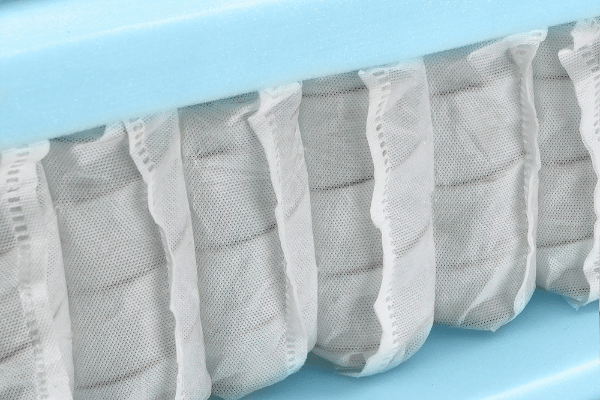
Hybrid Mattresses are one of the most innovative mattresses available in the market. They combine memory foam, latex or gel, and spring mattresses to provide comfort and support.
Layers of Hybrid Mattresses
Hybrid Mattresses contain 4 kinds of layers, including
1. Pillow Top
The Pillow Top Layer is made for the additional comfort of the individual and has an additional cushioning effect.
2. Comfort Layer
The comfort layer is made of memory foam, latex, and cool-inducing gel. These layers are responsible for providing comfort to the sleeper.
3. Support Core
The support core is made of spring and can be innerspring, continuous spring, pocket spring, or Bonnell spring. This layer makes up the majority of the height of hybrid mattresses.
4. Base Layer
The base layer is generally made of foam for padding, sturdiness, and mattress stability.
Pros of Hybrid Mattresses:
- Hybrid Mattresses are suitable for people with any sleeping position. Even if you are a side sleeper, back sleeper, or stomach sleeper, you will find your comfort with Hybrid Mattresses.
- Hybrid Mattresses are excellent at providing back and joint support because of their unique mix of Foam and Innerspring mattresses.
- Hybrid Mattresses offer pressure point relief. Hence, you won’t ever wake up with pain in your body.
- Hybrid Mattresses have good breathability and cooling properties. Hence, your bed will always be cold, and you won’t sweat.
- Hybrid Mattresses have motion isolation features to ensure that you have a peaceful night of sleep.
Cons of Hybrid Mattresses:
- Hybrid Mattresses are expensive.
- If your hybrid mattress is not made of a pocket spring mattress, you may experience the motion transfer of your partner.
- The spring coils of hybrid mattresses may break down over time, causing sounds and noises.
- Hybrid Mattresses are heavy.
11. Dual Comfort Mattresses
Dual comfort mattresses are also popularly known as Flip Mattresses. As the name suggests, Dual Comfort Mattresses provide comfort and firmness no matter what side of the bed you sleep on. Dual Comfort Mattresses have a strong core, with layers of varying density above and below the core.
Pros of Dual Comfort Mattresses:
- You can choose your choice of comfort with a single mattress. You have an option to sleep on the medium-firm side or hard or the medium-soft side.
- As you get a double mattress, you can use them for a longer time. Even if one side of your mattress gets old and weary, the other side of your bed will still provide you with support and comfort.
- As these mattresses have varying and high levels of density, they equally distribute the body’s pressure.
- Along with comfort and support, Dual Comfort Mattresses also ensures spinal alignment.
- Dual Comfort Mattresses are affordable.
Cons of Dual Comfort Mattresses:
- If your dual comfort mattress is soft on both sides, your mattress may be hot. Hence, such mattresses are not suitable for people living in hot regions.
12. Airbed Mattress
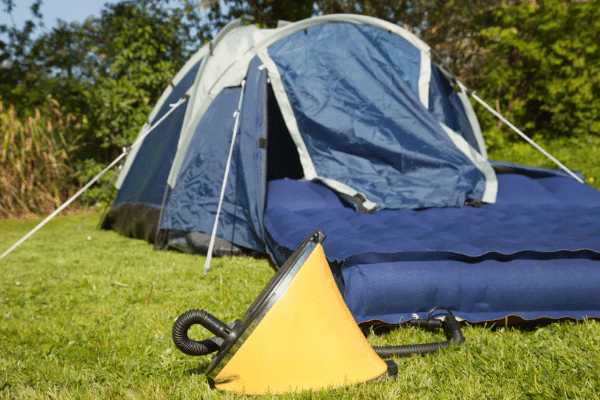
Airbed Mattresses are inflatable mattresses made of polyvinyl chloride (PVC) or textile-reinforced urethane plastic or rubber that has to be inflated regularly.
Pros of Airbed Mattresses:
- Airbed mattresses are a perfect choice for camping or temporary use.
- Airbed Mattresses do not sag.
- Airbed Mattresses do not off-gas.
- Airbed mattresses are an ideal choice to relieve pressure. They prevent pressure ulcers in people who lie on the bed for long hours.
Cons of Airbed Mattresses:
- Airbed Mattresses do not provide significant support or spine alignment. Using an Airbed Mattress regularly may lead to back pain.
- Airbed Mattresses are not suitable heat regulators. Since they are made of materials like polyvinyl, temperature regulation is difficult, and you may experience a hot and sweaty sleep.
- Maintenance of Airbed Mattresses is difficult as they have to be filled with adequate air at all times.
- Airbed mattresses do not prevent motion transfer and might cause disturbed sleep.
Is an air bed good for daily use?
No, air bed mattresses are not the ideal choice for daily use. Regularly using an airbed mattress may cause back pain and stiffness.
What is the price of air bed in India?
Air beds are generally cheaper than other types of mattresses. They may cost you anywhere between ₹1000 upto ₹5000.
13. Cotton Mattresses

Cotton Mattresses are one of India’s oldest, most widely used, and sold mattresses. They are made of cotton, which is highly available in India.
Pros of Cotton Mattresses:
- Cotton Mattresses are eco-friendly.
- Cotton Mattresses are incredibly soft and comfortable.
- Cotton Mattresses are affordable.
- Cotton Mattresses have high breathability and moisture absorption features. Hence, you never have a sweaty sleep.
Cons of Cotton Mattresses:
- Since Cotton Mattresses are made of natural materials, they quickly catch dust, leading to dust mites.
- Cotton Mattresses quickly catch fire and should not be kept in areas susceptible to fire.
- Cotton Mattresses may cause pressure point pains.
14. Waterbed Mattress
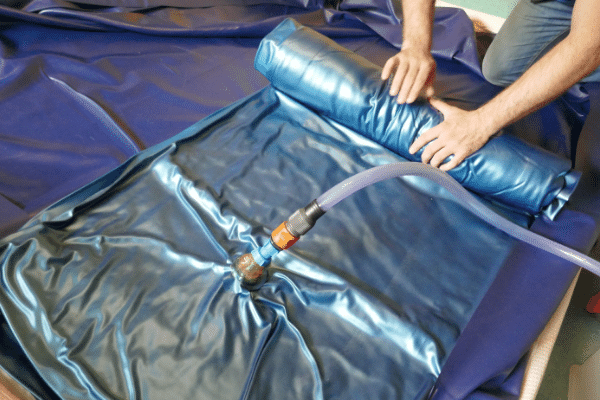
As the name suggests, waterbed mattresses are made and filled with water. Waterbeds are now available in 2 major types, Hardside Waterbed and Softside Waterbed. Hardside waterbeds have a hard side bed frame that prevents bulging of waterbeds. Softside Waterbeds have a standard bed frame and bedding.
Pros of Waterbed Mattress:
- Waterbed mattresses are known to provide pressure relief.
- Waterbed Mattresses evenly distribute the body weight, making them an ideal choice for paralytic patients.
- Regular cleaning of the waterbed mattresses is easy and will ensure no dust mites.
- Waterbeds are hypoallergenic.
Cons of Waterbed Mattress:
- Waterbed Mattresses do not come in all sizes.
- Movement in a waterbed mattress is often more difficult than in regular beds.
- Maintenance of waterbed mattresses is complex as regular refilling of water is essential.
- Waterbed Mattresses may develop a foul odor over time.
Are waterbeds still sold?
The sales of Waterbed mattresses declined at a similar rate to which it once had increased. The making and selling of waterbed mattresses have significantly reduced, and only a few manufacturers are in the business of selling waterbeds.
Can you put a mattress topper on a waterbed?
Fitted style sheets can be used as a mattress topper on your waterbed. However, if you wish to use a regular mattress topper for your waterbed, ensure that you have tricks to prevent them from sliding or slipping down.
Author’s Tip: No matter what type of mattress, always choose the one with medium firmness. Medium-firm mattresses have excellent health benefits. According to a recent study published in the Journal of Orthopaedics and Traumatology, medium-firm mattresses improve sleep quality and reduce risks of non-significant lower back pains.
You May Also Like To Read:
Which Type of Mattress is Good for Your Health?
What is the Ideal Thickness for a Mattress?
Mattress Sizes Chart and Bed Dimensions Guide
Conclusion
A good mattress is the key to good sleep. There are different types of mattresses available in India, and each of them has its significance. They are different in how they are made, and learning about the different types of mattresses helps us learn what type of mattress will work the best for us. Nonetheless, a good knowledge of the mattresses can help us avoid any facade or false promises that a seller may make.
Drop in a comment below and tell us which is your favorite mattress!


